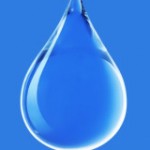 Beer contains approximately 90% water, and the importance of the liquor to final beer quality cannot be over-estimated. The subject is so complex that there are entire books on the subject, such as John Palmer & Colin Kaminski’s Water: A Comprehensive Guide for Brewers.
Beer contains approximately 90% water, and the importance of the liquor to final beer quality cannot be over-estimated. The subject is so complex that there are entire books on the subject, such as John Palmer & Colin Kaminski’s Water: A Comprehensive Guide for Brewers.
As outlined in Ray Alton’s “Water Water Everywhere…..” article in breWorld (01/03/99), Historically a correlation was observed between the liquor composition of an area and the type of beer that the region could best brew. The Pale Ales of Burton-on-Trent and Edinburgh, Porters of London, Stouts of Dublin and Lagers of Pilsen are classic examples.
Water falling as rain, hail, sleet or snow is pure, but dissolves gasses such as oxygen and carbon dioxide from the atmosphere. On reaching the ground the water runs off into rivers, streams and lakes and on in some cases to reservoirs. The composition of the water in the reservoirs is dependent upon the nature of the catchment area. In areas where the rocks are hard, the water will not penetrate deeply, and will be ‘soft’ – that is low in dissolved salts. In areas where the rocks are more permeable – gypsum or limestone for example – water will penetrate readily and dissolve many minerals on its way to the reservoirs to become ‘hard’.
The water supplied by local Water Authorities is required to be potable – that is fit to drink and free from pathogenic organisms. In order to reduce microbiological counts chlorine will usually be added, but the water is not sterile. Fortunately however the micro organisms found in water are not beer spoilage organisms, being unable to survive the conditions of high ethanol and hop resin levels and low pH found in beers.
So the objective of liquor treatment is to convert the water sent to us by the Water Authorities into acceptable brewing liquor. This we achieve by the removal of unwanted ions and addition of required levels of desirable ions.
Most of us are part of Beaver lake water distinct, and you can find the quality reports which contain detailed water analysis HERE.
Below are some references for a more in-depth explanation of the subject:
Additionally, there are several “calculators” that can help when making water adjustments:
Bru’n Water Spreadsheet (an awesome and comprehensive tool)


